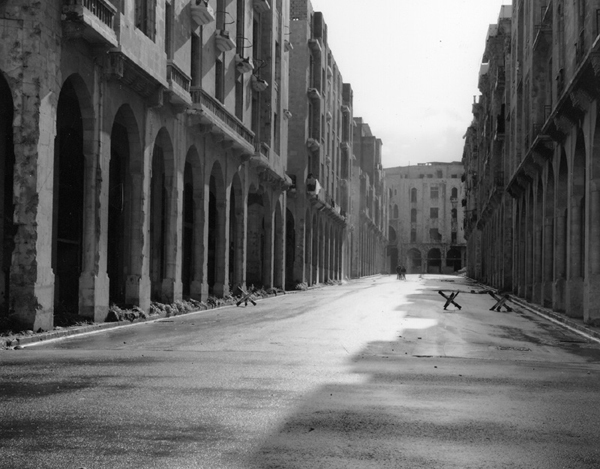
Rue El Maarad, 1991. Black and white photography. 100 x 120 cm. A.P. |
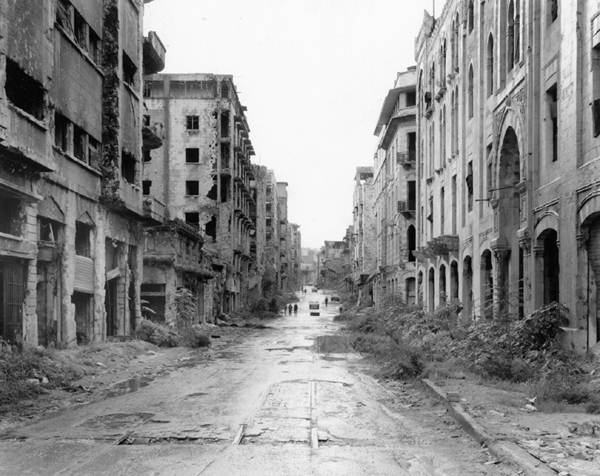
Rue Weygand, 1991. Black and white photography. 100 x 120 cm. Edition of 15. |
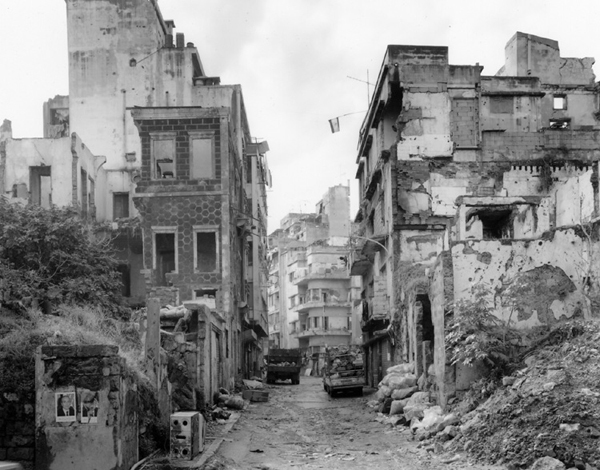
Rue Petro Paoli, 1991. Black and white photography. 100 x 120 cm. Edition of 15. |
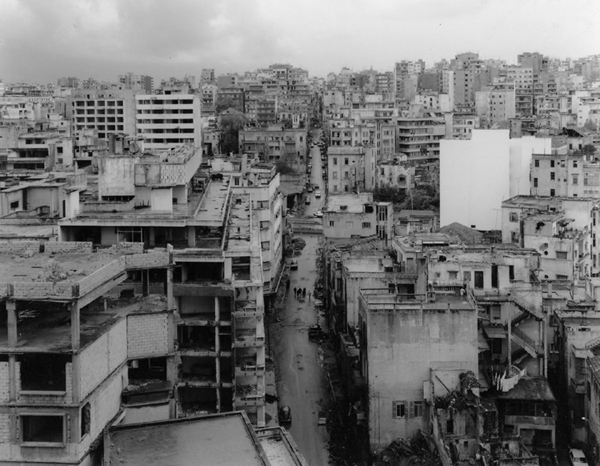
Rye Syrie, 1991. Black and white photography. 100 x 120 cm. Edition of 15. |
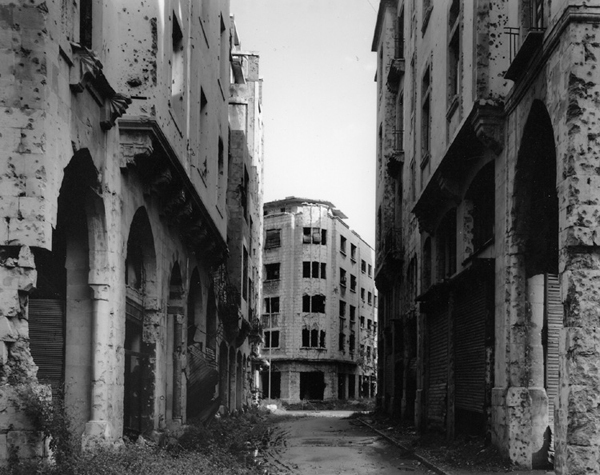
Rue Dirkè, 1991. Black and white photography. 100 x 120 cm. Edition of 15. |
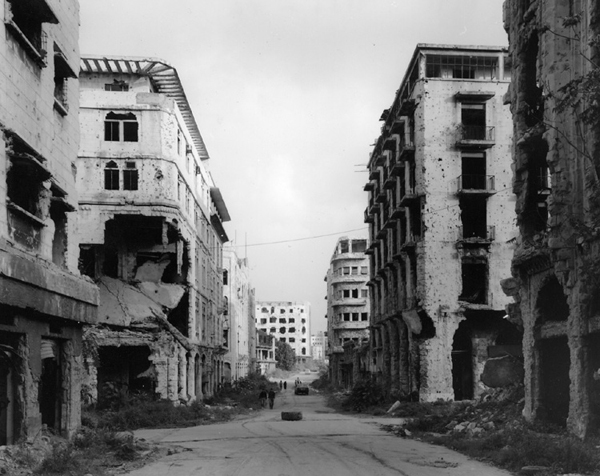
Rue Weygand, 1991. Black and white photography. 100 x 120 cm. Edition of 15. |
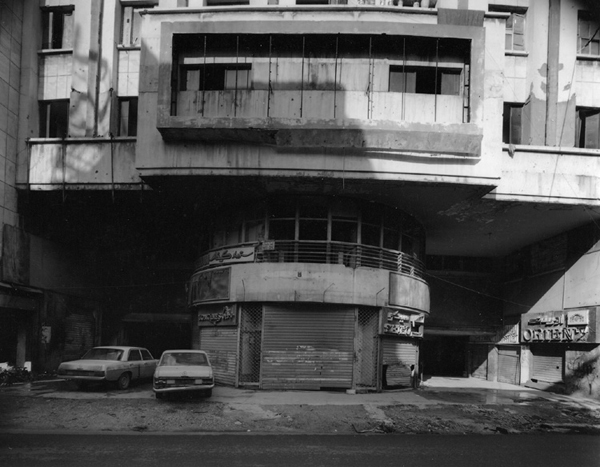
Rue Gourand, 1991. Black and white photography. 100 x 120 cm. Edition of 15. |
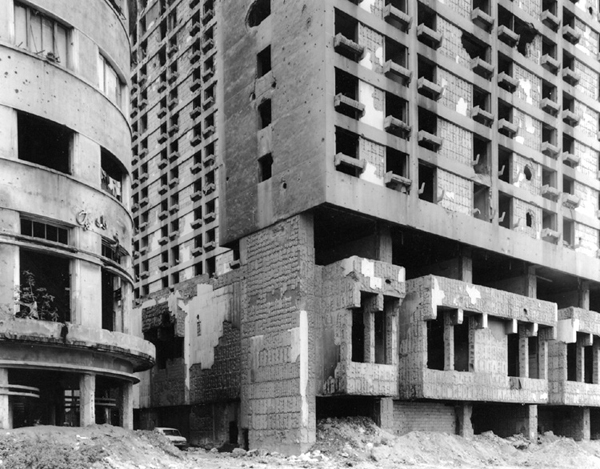
Rue Salloum, 1991. Black and white photography. 100 x 120 cm. Edition of 15. |
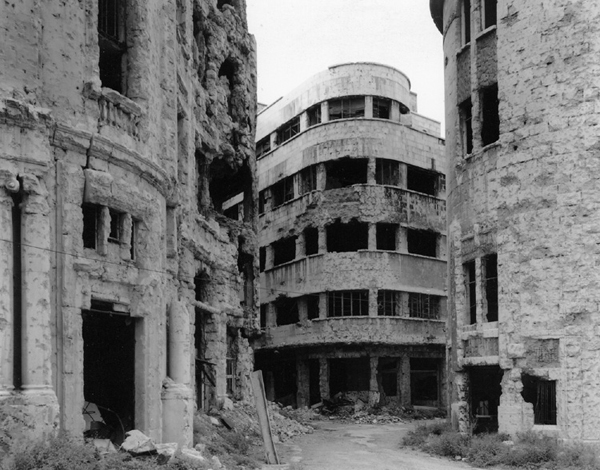
Rue Allemby / Rue Fakhry Bey, 1991. Black and white photography. 100 x 120 cm. Edition of 15. |
In 1991, I was invited by the Lebanese writer Dominique Eddé to participate in a project with the objective of photographically documenting the central zone of the city of Beirut.
The work was planned for a group of photographers whose experiences would intersect freely. I found myself working with Raymond Depardon, René Burri, Josef Koudelka, Fouad Elkoury and Robert Frank. The uniqueness of the project really excited me, as did the group itself, which was made up of greatly prestigious artists, especially Robert Frank, who with his book The Americans had internationally revolutionised photographic art.
Our brief ensured we had complete liberty of expression. No one had been assigned a specific objective or an exact area on which to base their work. Only the topographical area had been marked out and it was the same for everyone. It comprised the central part of the city, bordered to the north by the sea, to the south by the circular road known as the Ring, to the east by the Christian zone and to the west by the “mixed” zone.
Our task was not to produce a report or a photographic inventory but to reflect the “state of things”, a direct experience of the place through a free and personal interpretation during an incomparable and critical moment in the history of Beirut. This was the end, in 1990, of a gruelling war that had started 15 years before (the 13th of April 1975) and the beginnings of the subsequent expectation for reconstruction. It had been an absurd and ruthless war, viciously driven by alliances and betrayals between opposed factions. It was a war of attrition fought with light and medium weapons that destroyed hundreds of thousands of human lives and devastated the centre of the city: in an area of 1 km by 1.5 km the shootings had been endless, in the streets, from the windows, from the roofs and even in the most sacred and private places, as shown by the hundreds of used cartridges of all the calibres that still can be found in the most unlikely parts of the city. The photography was entrusted with the civil duty of contributing to the construction of the historic memory with this testimony of human madness.
We all worked in the period running from October to December 1991. In 1992, with the contribution from the Hariri Foundation and under the artistic supervision of Robert Delphire, the volume Beyrouth Centre Ville (Beirut City Centre) (Éditions du Cyprès) was completed, featuring 130 photographs arranged into individual portfolios, a text by Dominique Eddé and a poem by Adonis. Later an exhibition, again under the supervision of Robert Delphire, was held at the Palais de Tokyo in Paris and subsequently toured Europe.
Gabriele Basilico.

